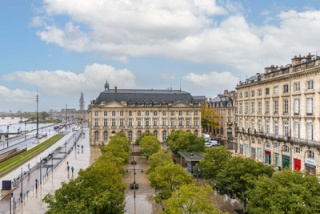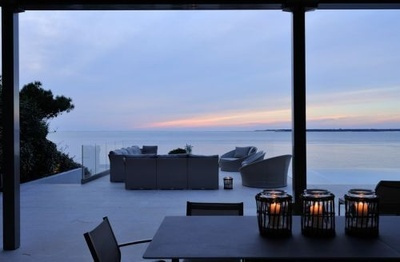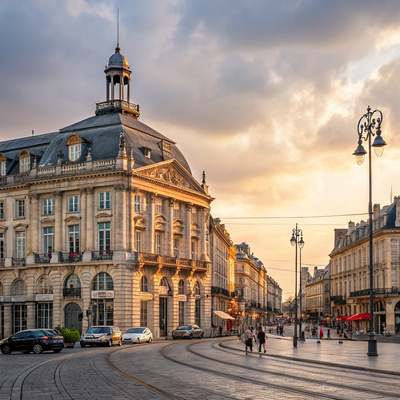Sotheby's International Realty
- 40 Cours de Verdun
- 33000 Bordeaux, France
- +33 5 56 79 63 62
Sotheby's International Realty
- 13 Boulevard de l'Océan
- 33115 Pyla sur mer, France
- +33 5 57 72 04 54
Sotheby's International Realty
- 186 bis route du Cap Ferret, Le Canon
- 33950 Lège-Cap Ferret, France
- +33 5 56 60 68 32
The impact of international investors on Bordeaux's real estate ecosystem
Bordeaux : luxury real estate trends

For more than a decade, Bordeaux's appeal has far outstripped that of its traditional assets, such as the wine industry or its architectural heritage. Now a dynamic regional metropolis, the city is attracting an increasing number of international investors, who are helping to transform its property market.
From buying up wine estates and top-of-the-range residential developments to renovating old buildings and historic properties, this influence is redefining the urban and peripheral balance, driving up prices and reshaping the map of popular districts, towns and villages.
Historical changes in the investment landscape in and around Bordeaux
Historically, Bordeaux has always attracted a wealthy clientele, drawn by its geographical location, lifestyle and architectural heritage. But from the 2010s onwards, a turning point came with the gradual arrival of foreign investors. The phenomenon began in the vineyards, mainly in prestigious appellations such as Médoc and Saint-Émilion, before spreading to high-end urban and suburban property. Between 2010 and 2025, investment flows reveal three major poles: Asia (dominated by Chinese investors), Europe (British, Swiss and Belgians), and North America (notably Americans and investment funds).
The Chinese phenomenon
The golden age of wine acquisitions
The first wave of Chinese investment in Bordeaux vineyards began in 2010. According to data fromGironde notaries and the Bordeaux Wine Trade Council (CIVB), over 160 wine estates were acquired by Chinese nationals between 2010 and 2020.
These acquisitions focused on strategic but accessible areas such as Entre-Deux-Mers and Libourne, with the goal of combining heritage investment and commercial leverage for the Asian market.
Registered transactions and location strategies
These purchases were part of a broader prestige investment strategy, often involving renovation and marketing repositioning. Some investors even created direct distribution channels between Bordeaux and China.
Analysis of châteaux acquired
The properties targeted are mainly medium-sized, producing between 100,000 and 300,000 bottles annually. High-profile purchases such as Château La Rivière (Fronsac) and Bellefont-Belcier (Saint-Émilion) illustrate interest in up-and-coming appellations.
The 2024 turnaround: deciphering current disposals
Since 2023, a market downturn is emerging. China's economic uncertainties, restrictions on capital outflows, and low profitability are pushing some investors to sell — sometimes at a loss. This may signal the end of a cycle or a strategic reallocation to more profitable sectors like residential real estate.
European investors: counterpoint and complementarity
The British and the enhancement of architectural heritage
The British, many of whom already live in the Dordogne or Sud-Gironde, show a strong interest in 18th-century townhouses and private mansions. Their strategy includes restoring character properties for mixed use: second homes and seasonal rentals.
The Swiss approach: private funds and asset management
Swiss investors operate through family offices or private funds, acquiring entire buildings in middle-class Bordeaux districts such as Triangle, Jardin Public, and Fondaudège to build stable rental portfolios.
The emergence of American buyers
Post-pandemic, American buyers — particularly from New York, Boston, and Washington — are investing in prestigious properties in central Bordeaux, especially in Chartrons, Jardin Public and Triangle. They are also active in the Bassin d'Arcachon (notably villas near the beach).
While many purchase for personal use, some see high-end rentals as an opportunity. Their expectations (air-conditioning, smart home systems, sustainable renovations) are raising the bar and benefiting local craftsmen and architectural firms. Additionally, the favorable dollar-euro exchange rate plays in their favor.
Multi-sector impact on the local economy
Premium property
In the premium segment, foreign investors are driving up demand and prices, especially in areas like Chartrons, Jardin Public and Triangle. With limited supply, competition is increasing for renovated character properties with architectural value.
Adding value to properties
This wave of investment is raising standards in terms of renovation quality and features (pools, gardens, lifts, smart systems, parking). Local businesses — especially high-end craftsmen and concierge services — are seeing more demand, sometimes with extended wait times.
Tensions and adjustments in the residential rental market
However, this foreign capital also puts pressure on the traditional rental market. Many properties are redirected to short-term furnished rentals or long-term speculative holdings, reducing housing availability for local residents. In response, the city is implementing quotas, rental caps, and compensation rules.
New regulatory challenges and opportunities
The challenge of ‘ghost châteaux’
Some wine estates acquired and then abandoned are becoming ‘ghost châteaux’, highlighting the risks of purely speculative investment. Local authorities are considering regulatory frameworks to protect the winegrowing landscape.
Metropolitan policy: towards a sustainable investment framework
The Bordeaux metropolitan area is promoting sustainable urban development via calls for projects focusing on functional diversity, energy transition, and brownfield rehabilitation. These could attract a new wave of environmentally conscious investors.
Outlook for 2025–2030
By 2030, we expect a more diverse investment landscape both in geography and in asset types. Areas like Lacanau, Biscarrosse, the Bassin d’Arcachon (Pyla, Cap Ferret), and suburban towns (Bouliac, Camblannes, Mérignac, Pessac, Le Bouscat) are gaining traction. Emerging sectors like coliving, senior residences, and commercial real estate may also see increased international interest.
Conclusion
The impact of Chinese investors, and more broadly international investors in Bordeaux and its surroundings, is both significant and transformative. While they have enhanced architectural heritage and bolstered premium segments of the market, they have also introduced challenges related to regulation and market accessibility. In a shifting global environment, the region must find a balance between international appeal and preserving local identity.







